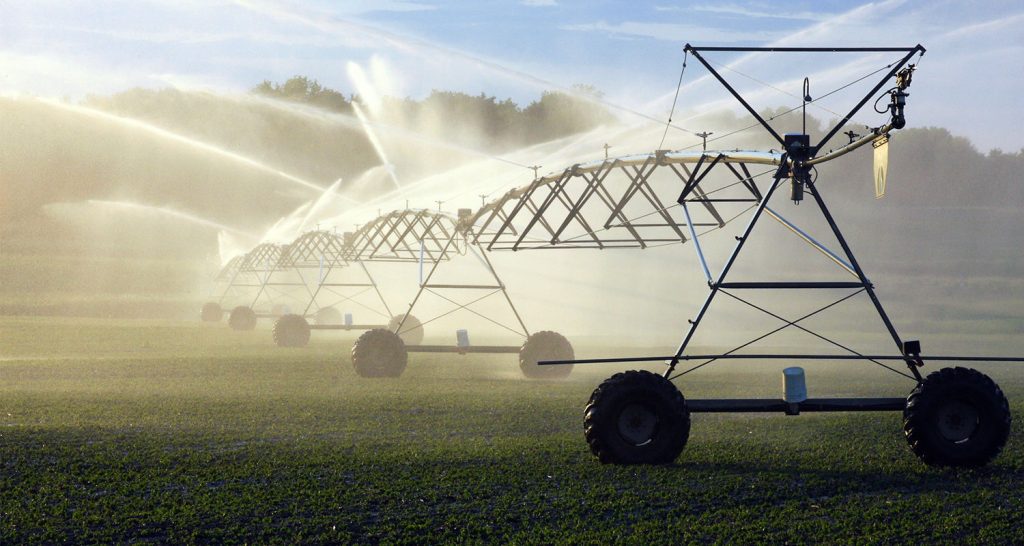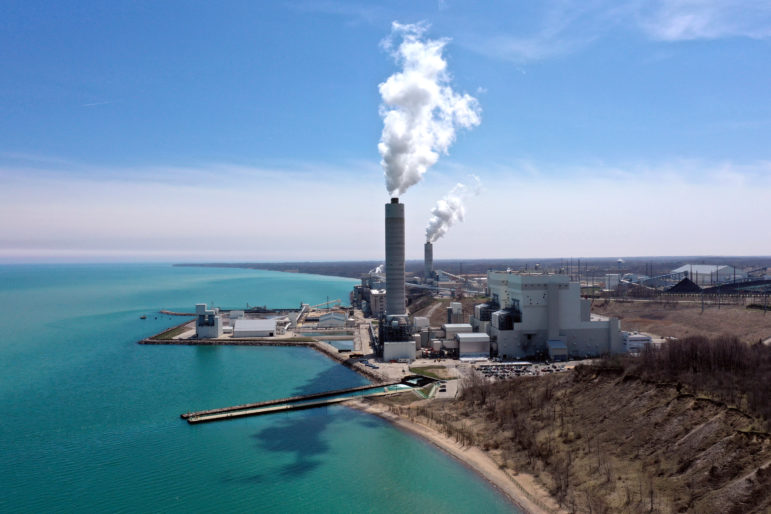Wisconsin Used Most Water Ever Reported to Irrigate Crops in 2023
Drought conditions and rise of high capacity wells lead to historic level of irrigation.

Aqua Mechanical (CC-BY)
Water withdrawals for irrigating crops in Wisconsin reached their highest level ever reported in 2023 as a flash drought prompted growers to pump more water from high capacity wells, according to a state report.
The Wisconsin Department of Natural Resources released the report on Friday. In 2023, more than 14,000 water supply systems withdrew 1.8 trillion gallons of water, which is just below the annual average of 1.9 trillion gallons in the past decade.
Adam Freihoefer, the DNR’s water use section manager, said water used for irrigation surpassed the 115 billion gallons used during the drought of 2012 due to dry conditions lasting longer through the growing season.
“We saw more water being used to keep those crops going across the state,” Freihoefer said.
The DNR said the approval of nearly 700 high capacity wells since 2012 may have helped push water withdrawals higher in 2023. Those wells are capable of pumping more than 100,000 gallons of water per day.
In 2012, drought conditions combined with groundwater pumping caused some lakes and streams to dry up in the Central Sands region. The region spans 1.75 million acres and parts of eight counties, including Adams, Portage and Waushara counties. Those counties were among the top users of groundwater for irrigation in 2023.
Central Sands region has thousands of high capacity wells
The Central Sands region has more than 3,100 high capacity wells. The area is a big production area for potato and vegetable growers, according to Tamas Houlihan, executive director with the Wisconsin Potato and Vegetable Growers Association. The state ranks third in the nation for potato production, and Houlihan said growers irrigate more than 95 percent of the state’s roughly 67,500 acres of potatoes.
“When it’s dry, the growers can put on the precise amount of water that the crop needs,” Houlihan said. “They’ve learned to fine tune their irrigation applications so that they are only putting on the amount that the crop can use, and they do it at the right times.”
Houlihan said the river didn’t dry up in 2023, which he attributed to removal of nearby high capacity wells and work to improve flows. However, stretches of other streams in Adams County did run dry in 2023.
Houlihan and the DNR noted that extremely wet weather from 2017 to 2022 helped drive water tables higher, reducing impacts to waterways.
Sara Walling, water and agriculture program director for Clean Wisconsin, said the report underscores the heavy water demand from agriculture to grow crops.
“It really, I think, underlines the importance of the … department really using their expertise to help identify where and what levels [of] water withdrawals can be sustained, and where we need to maybe pull back on those withdrawals to make sure that our groundwater system continues to be healthy,” Walling said.
A 2021 ruling by the Wisconsin Supreme Court in a case brought by Clean Wisconsin and others found the DNR has the authority to consider potential environmental harm on state waters when reviewing a high capacity well application.
Houlihan said any concerns over water quantity or quality can be addressed better by working with growers and other partners rather than restricting the number of wells.

The plants, in Oak Creek, near Milwaukee, are coal-fired electrical power stations. Coburn Dukehart/Wisconsin Watch
Water use among other sectors
Among other sectors, the DNR found water withdrawals were the second-highest for municipalities next to 2012, drawing 190.1 billion gallons from groundwater and surface water.
In late 2023, the city of Waukesha switched from drawing its drinking water from a groundwater aquifer to Lake Michigan. While it’s not captured in the report, Freihoefer said the groundwater aquifer rose 55 feet in the nine months following the switch.
“In the power sector, power plants have gone offline,” Freihoefer said. “When you take a power plant offline, you’re changing the surface water withdrawals by quite a bit. So we can see a decrease, and that may be why.”
Walling expressed concern that the Great Lakes will see increasing demand for water as power companies have proposed new gas-fired power plants and expansion of data centers.
“We’re really trying to keep an eye on all of those competing factors for our groundwater and surface water use in the state,” Walling said.
Among sectors highlighted, paper manufacturing saw the lowest water withdrawals since reporting began as mills have closed in the state.
Wisconsin growers used the most water ever reported to irrigate crops in 2023 was originally published by Wisconsin Public Radio.
If you think stories like this are important, become a member of Urban Milwaukee and help support real, independent journalism. Plus you get some cool added benefits.




















